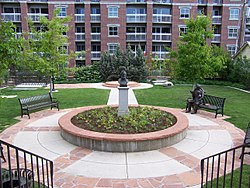
Brigham Young was an American religious leader and politician. He was the second president of the Church of Jesus Christ of Latter-day Saints from 1847 until his death in 1877. During his time as church president, Young led his followers, the Mormon pioneers, west from Nauvoo, Illinois, to the Salt Lake Valley. He founded Salt Lake City and served as the first governor of the Utah Territory. Young also worked to establish the learning institutions that would later become the University of Utah and Brigham Young University. A polygamist, Young had at least 56 wives and 57 children. He formalized the prohibition of black men attaining priesthood, and led the church in the Utah War against the United States.

Ann Eliza Young also known as Ann Eliza Webb Dee Young Denning was one of Brigham Young's fifty-five wives and later a critic of polygamy. Her autobiography, Wife No. 19, was a recollection of her experiences in the Church of Jesus Christ of Latter-day Saints. She grew up in a polygamous household which moved to Utah during the Mormon migration. Ann Eliza was married and divorced three times: first to James Dee, then Young, and finally Moses Denning. Her divorce from Young reached a national audience when Ann Eliza sued with allegations of neglect, cruel treatment, and desertion. She was born a member of the LDS Church, but was excommunicated shortly after her public divorce from Young.

Brigham Young Jr. served as president of the Quorum of the Twelve Apostles of the Church of Jesus Christ of Latter-day Saints from 1899 until his death. His tenure was interrupted for one week in 1901 when Joseph F. Smith was the president of the Quorum.

The Beehive House was one of the official residences of Brigham Young, the second President of the Church of Jesus Christ of Latter-day Saints, in Salt Lake City, Utah, United States. The Beehive House gets its name from the beehive sculpture atop the house.

Martha Maria "Mattie" Hughes Cannon was a Utah State Senator, physician, Utah women's rights advocate, suffragist, polygamous wife, and a Welsh-born immigrant to the United States. Her family immigrated to the United States as converts to the Church of Jesus Christ of Latter-day Saints and traveled West to settle in Utah territory with other Saints. She started working at the age of fourteen. At sixteen she enrolled in the University of Deseret, now called the University of Utah, receiving a Bachelors in Chemistry. From there she attended the University of Michigan and received her MD. She became the fourth of six wives in a polygamous marriage to Angus M. Cannon, a prominent Latter-day Saint leader during the anti-polygamy crusade. Cannon exiled herself to Europe so she wouldn't have to testify against her husband and others. Upon returning to Utah, Cannon worked as a doctor and fought for women's rights. She helped put women enfranchisement into Utah's constitution when it was granted statehood in 1896. On November 3, 1896 Cannon became the first female State Senator elected in the United States, defeating her own husband, who was also on the ballot. Martha Hughes Cannon was the author of Utah sanitation laws and was a founder and member of Utah's first State Board of Health.
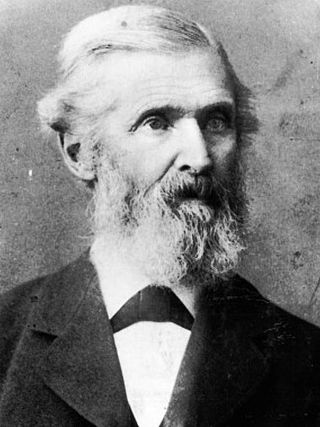
Truman Osborn Angell was an American architect who served many years as the official architect of the Church of Jesus Christ of Latter-day Saints. The brother-in-law of Brigham Young, he was a member of the vanguard company of Mormon pioneers that entered the Salt Lake Valley on July 24, 1847. He designed the Salt Lake Temple, the Lion House, the Beehive House, the Utah Territorial Statehouse, the St. George Utah Temple, and other public buildings. Angell's modifications to the Salt Lake Tabernacle are credited with perfecting the acoustics for which the building is famous.

John Van Cott was a prominent member of the Church of Jesus Christ of Latter-day Saints serving as a member of the Quorum of the Seventy, as one of the Seven Presidents of the Seventy, and also as president of the Scandinavian Mission.

The This is the Place Monument is a historical monument at the This Is the Place Heritage Park, located on the east side of Salt Lake City, Utah, at the mouth of Emigration Canyon. It is named in honor of Brigham Young's famous statement that the Mormon pioneers should settle in the Salt Lake Valley. On July 24, 1847, upon first viewing the valley, Young stated: "This is the right place, drive on." Mahonri M. Young, a grandson of Brigham Young, sculpted the monument between 1939 and 1947 at Weir Farm in Connecticut. Young was awarded $50,000 to build the monument in 1939 and he was assisted by Spero Anargyros. It stands as a monument to the Mormon pioneers as well as the explorers and settlers of the American West. It was dedicated by George Albert Smith, president of the Church of Jesus Christ of Latter-day Saints, on July 24, 1947, the hundredth anniversary of the pioneers entering the Salt Lake Valley. It replaced a much smaller monument located nearby.

Joseph Standing was a missionary for the Church of Jesus Christ of Latter-day Saints who was killed by a mob near the town of Varnell, Whitfield County, Georgia, in 1879.
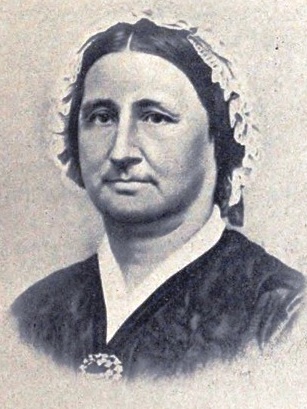
Mary Ann Angell Young was the second woman married to Brigham Young, who served as president of the Church of Jesus Christ of Latter-day Saints. Young's first wife had died in 1832, leaving Young a widower. Angell and Young were married on March 31, 1834, in Kirtland, Ohio. Angell eventually gave her consent to the practice of plural marriage after Young's marriage to Lucy Ann Decker, his first plural wife. Angell remained married to Young until his death in 1877, and together they had six children.

Harriet Amelia Folsom Young was a pioneer and an early member of the Church of Jesus Christ of Latter-day Saints, as well as a cultural and political figure in Salt Lake City, Utah. An accomplished pianist and vocalist, Folsom was the fifty-first plural wife of Brigham Young, who served as the church's second president.

Joseph Angell Young was an apostle of the Church of Jesus Christ of Latter-day Saints. Young is one of the few Latter-day Saints in history to have been ordained to the office of apostle without ever becoming a member of the Quorum of the Twelve Apostles or the First Presidency.

John Riggs Murdock was a Mormon pioneer, Utah politician, and leader of the Church of Jesus Christ of Latter-day Saints in Beaver, Utah. He is sometimes credited as the leader of the most down-and-back companies in Latter-day Saint history, as he directed multiple ox-drawn wagon trains sent from Utah to bring back both merchandise and emigrating church members from back East. Murdock also served several missions in the eastern United States.

John Parry Sr. was an early Welsh convert to the Church of Jesus Christ of Latter-day Saints and was the first musical conductor of the Mormon Tabernacle Choir.
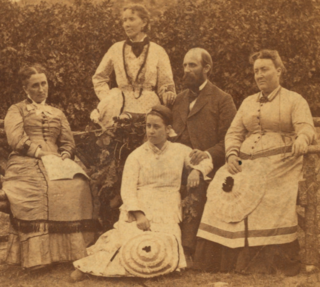
Possibly as early as the 1830s, followers of the Latter Day Saint movement, were practicing the doctrine of polygamy or "plural marriage". After the death of church founder Joseph Smith, the doctrine was officially announced in Utah Territory in 1852 by Mormon leader Brigham Young. The practice was attributed posthumously to Smith and it began among Mormons at large, principally in Utah where the Church of Jesus Christ of Latter-day Saints had relocated after the Illinois Mormon War.

The Brigham Young Monument is a bronzed historical monument located on the north sidewalk of the intersection at Main and South Temple Streets of Salt Lake City, Utah. It was erected in honour of pioneer-colonizer, Utah governor, and LDS Church president Brigham Young who led the Mormon pioneers into the Utah Territory in 1847. The base of the twenty-five-foot monument has the bronze figure of an Indian facing east and that of a bearded fur trapper facing west, both of which preceded the Mormon settlers. On the south side is a bronze bas-relief of a pioneer man, woman, and child, while another bronze plaque has a list of the pioneers who arrived in the Salt Lake Valley on July 24, 1847, and their equipment.

Hiram Bradley Clawson was a Latter-day Saint businessman and Church leader in the 19th and early 20th centuries.

Edmund Lovell Ellsworth was a noteworthy early "pioneer" member of the Church of Jesus Christ of Latter Day Saints. He was noted for his membership in the initial pioneer company, and later for acting as Captain of the First Handcart company of Mormon Pioneers during their emigration from Liverpool, England to the Salt Lake Valley in 1856.

Mary Ann Pratt ( was a midwife and early member of the Latter Day Saint movement who was the second wife of Parley P. Pratt, one of the original twelve apostles of the Church of Jesus Christ of Latter Day Saints. She accompanied Parley P. Pratt on several missions, including one to Europe and was instrumental in publishing his writings and poems. Mary Ann joined with the church and followed Brigham Young to Utah with the Mormon pioneers, arriving in Utah Territory in 1852. She is also considered by some to have been one of the plural wives of Joseph Smith the founder of the Latter Day Saint movement. Her life paralleled much of the early history of the church.
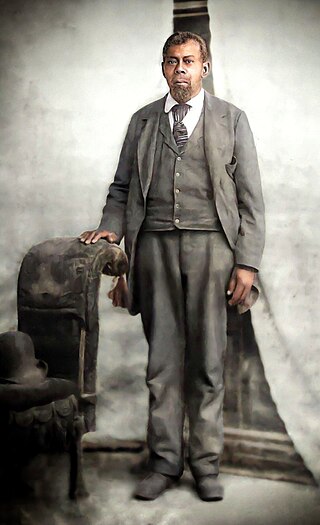
Green Flake was an early African-American member of the Church of Jesus Christ of Latter Day Saints, and was one of the three enslaved African-American Latter-day Saint pioneers who entered the Salt Lake Valley on July 22, 1847. He was born into bondage on a plantation in Anson County, North Carolina. His enslaver, James Flake, took him to Mississippi in the early 1840s. There, James, his wife, and Green joined the Church of Jesus Christ of Latter Day Saints in 1844. The Flakes moved to Nauvoo, Illinois, in 1845. Green Flake received his freedom sometime in the early 1850s and married Martha Morris. Green and Martha had two children together.
